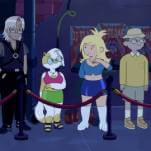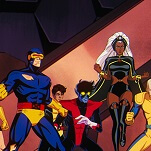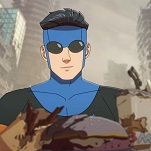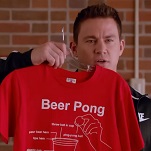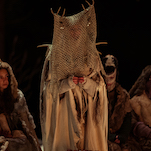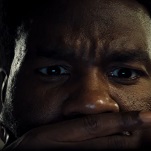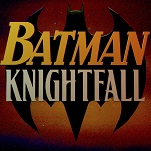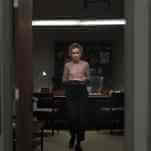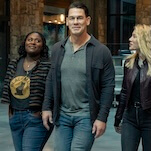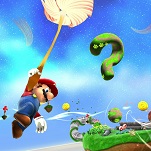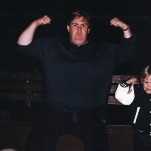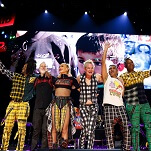How Homestar Runner changed web series for the better

For most of the history of television, the barrier to syndication—and to profitability—has been 100 episodes. The shows that have made it to that mark are an unusual group. Many were big hits. Some found small cult audiences. Still others just hung on as best they could and never posted numbers quite low enough to be canceled. In 100 Episodes, we examine shows that made it to that number, considering both how they advanced or reflected the medium and what contributed to their popularity.
The idea of television that originates on the Internet is still a new one. No matter how many Emmy nominations Netflix receives for House Of Cards, no matter how much critical acclaim for Orange Is The New Black, the very idea of pulling up a browser screen and plowing through a full season of TV is still an exotic one. And even looking beyond Netflix, Hulu, and Amazon—the behemoths in the Internet TV world—there’s YouTube, a place where anybody with a camcorder and a reasonably articulate script can come up with something that grabs the attention of a small (but ever-growing) audience. Programs like John and Hank Green’s Vlog Brothers, the weird drama Lonelygirl15, and the horror series Marble Hornets have earned followings as loyal as those for any TV series. And all of those references are years out of date. Internet TV evolves and mutates so quickly it’s often hard to pin down just what it is.
There remains the lack of a critical apparatus to talk about web series, short of just applying the ones used when talking about TV to a very different, very young, format. To be sure, the offerings of Netflix, Hulu, and Amazon are TV shows produced for the Internet. But what about something like Husbands or The Guild, which both began as bite-sized chunks of content, then gradually morphed into something more TV-like but still very much uniquely of their medium? They occupy a poorly defined middle ground between “TV” and “web video,” and there are few—if any—attempts to approach them as something other than TV’s weird younger sibling. Web series seem to start out as some very low-budget collection of tiny morsels of content, and then gradually expand as budgets and ambitions grow. In some ways, it looks like what an independent TV scene could theoretically be. In other ways, it’s nothing like television.
So much of this understanding of web video was already present in the works of Homestarrunner.com, the first online provider of TV-like content to see significant crossover success. At the height of the site’s cultural cachet—roughly 2002 to 2005—the programs it offered, particularly its popular Strong Bad Emails series, made appearances in mainstream press publications like Entertainment Weekly. They were referenced on Buffy The Vampire Slayer’s series finale. News of them spread far and wide on the Internet, mentions of Trogdor The Burninator and The Cheat turning into a kind of lingua franca of Internet cool for those in the know. They turned up in video games both on the series’ site and produced by other companies. And this was accomplished almost entirely without social media. There wasn’t a Facebook or Twitter when Homestarrunner.com started putting up videos, and those videos were encoded in Flash (a platform that paled in comparison as a delivery system to essentially any video player out right now). The success of the site was a minor miracle, but it also seemed self-evident to anyone who spent more than a few minutes clicking around through its content. The stuff on Homestarrunner.com was really funny, and even if the site hasn’t been updated in years, its surprisingly elaborate mythology and characters still pop up in online discussions from time to time. It also provided a blueprint for web TV going forward: Start small, then keep going.
Homestar Runner began life as a children’s book, appropriate for how the web series that evolved from it rarely—if ever—trafficked in irony. Created in 1996 by Mike Chapman and Craig Zobel (the latter of whom went on to direct films like Compliance), The Homestar Runner Enters The Strongest Man In The World Contest existed primarily as a goof that was handed out to friends and likely would have been forgotten by many. But toward that decade’s end, Chapman and his brother, Matt Chapman, began to get into Flash animation, seeing possibilities for how it could be used to create short Internet cartoons. Up until that point, web video largely consisted of low-production-value live-action series underwritten by corporate sponsors and the occasional dancing-baby oddity, but Flash provided a platform flexible enough to work on the rudimentary broadband and cable connections that were spreading throughout the country. (Most videos would even load without too much hassle on fast dial-up connections.) Looking for subjects for an online animated series, the two turned to the main characters of Mike Chapman and Zobel’s book—especially the dorkily earnest main character and his arch-nemesis, Strong Bad, who was perpetually clad in a Mexican wrestling mask and boxing gloves.
Much of Homestar Runner’s animation is fairly rudimentary stuff. Arms go up and down. Mouths flap open. Characters stand in place while the background races past them to indicate movement. But all of that belies the program’s true strength: terrifically designed, perfectly written characters. The weirdos that populate Homestar’s world aren’t drawn from animated kids’ shows or even children’s books, but from another great American art form: the newspaper comic strip. As with Peanuts or Pogo, the characters may have hidden depths, but they’re largely defined by striking, singular personality traits. Homestar is the good guy, and even if he’s a bit of a nerd in the process, he’ll always return to that basic decency. Strong Bad proved too slippery for the antagonist role and ended up becoming something like a 10-year-old boy’s conception of everything that is awesome in the world. His brothers, Strong Mad and Strong Sad, were just what they sounded like. Coach Z was motivational, in his own weird way. The Cheat was basically Snoopy.
It was a boys’ universe, designed by two men who sometimes seemed like overgrown kids themselves. (The series’ one significant female presence, Marzipan, is mostly notable for being The Girlfriend, though she gets some stories of her own as the site progresses.) What made it work was how open and earnest the whole project was. Nothing here was intended to be mean or downbeat. It was all happy and peppy and shot through with color and light. The Chapmans’ bright, shiny surfaces and colorful character design took what can be a weakness of Flash animation—the way everything seems to so easily boil down to a series of connected shapes, like in one of those “I can draw!” books—and made it a strength. The designs were simple, poppy, and instantly recognizable. Even better, the two loved to switch them up by twisting the characters into all manner of different visual styles, or dressing them up in ridiculous costumes for the yearly Halloween episode. Couple those appealing visuals with the well-defined characters and sneakily amusing scripts, and the two had a recipe for Internet success.
